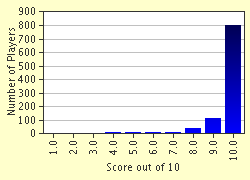Quiz Answer Key and Fun Facts
1. "Come to our beautiful planet, where you can fill your lungs with carbon dioxide, or be blown by winds moving at 220 miles per hour containing droplets of sulfuric acid! The planet is the hottest in the Solar System, with a temperature of around 500 degrees Celsius (900 degrees Fahrenheit), and is only the 2nd from the Sun, giving you an opportunity to soak up those rays!"
2. "Visit our home, the 7th planet from the Sun, and the 3rd-largest. Our planet's atmosphere contains traces of methane, giving the planet that lovely hue of blue-green! You will get to be on the only planet that rotates side along its journey along the Sun, unlike any other! Come here, and on your way you'll see our planet's rings, which are believed to contain some of the Solar System's darkest matter!"
3. "Our cool world, with a maximum temperature of -229 degrees Celsius, is named after the Roman god of the underworld, what you might perhaps call a misnomer! You can also have a look at our largest moon, Charon. Come visit us!"
4. "Come one, come all...come see the most enchanting gas-giant of them all, of a lovely dark-blue shade! Allow your mind to be blown away by the fastest winds in the Solar System, with speeds reaching 2,000 kilometres per hour! Don't forget to bring your sweater along, as it gets as cold as -220 degrees Celsius!"
5. "Ah...the 3rd planet from the Sun...2/3rds of its surface is covered by water, the rest by land. It has an atmosphere containing an ideal amount of oxygen (21%), and a one-of-a-kind climate. There are several noticeable features on this planet, particularly a large area covered by water referred to by locals as "The Pacific Ocean", a large land-mass in the planet's northern hemisphere called "Eurasia", and fragments of a huge wall running through a region known as "China", to only mention a few. Come visit; we guarantee you won't leave unsatisfied!"
6. "Take a look at the 2nd-largest planet in the Solar System, and yet another gas-giant! Our planet boasts of the Solar System's largest ring-system, extending 260,000 miles from the planet's surface. Our rings are made of silica, iron oxide and chunks of ice. Don't forget to stop by at the planet's largest moon, Titan, on your way here!"
7. "DO come and visit the closest planet to the Sun, and the fastest-orbiting one as well, all in one trip! That's right, our planet is the closest to the Sun, and also has the fastest orbiting speed- 30 miles per second! Take a look at the Caloris basin, the planet's largest crater, measuring 800 miles across. Experience living in conditions where there is virtually no atmosphere!"
8. "Take a trip to the Red Planet, the fourth from the Sun, and experience a whole new world! We have red dust covering most of the planet for the kids to play with, and several huge volcanoes, including Olympus Mons, the Solar System's biggest! Not to worry, though, these volcanoes are all extinct, and so there's nothing to fear. The planet also has two little, very irregularly-shaped satellites, Phobos and Deimos!"
9. "Come and visit the king of 'em all - the largest planet in the Solar System! Our planet is a massive gas giant, and its mass is 2.5 times that of the sum of the masses of all the other 8 planets! It also features the Great Red Spot, a high-pressure storm, which has lasted for at least 300 years. While you're here, why not take some time off to visit the planet's largest moons- Ganymede, Callisto, Io and Europa? You might even have a chance to witness a comet come crashing into the planet thanks to its strong gravitational force of attraction!"
10. Most of these advertisers are completely untrustworthy, intent on convincing naive travellers that their inhospitable planets are nothing short of paradise. Fortunately, you, the highly judicious, experienced and scrutinising one, are capable of telling *which* of these planets is conducive to human life, which of these planets is the safest for *you* to choose for a holiday. Which one is it?
Source: Author
achernar
This quiz was reviewed by FunTrivia editor
crisw before going online.
Any errors found in FunTrivia content are routinely corrected through our feedback system.

